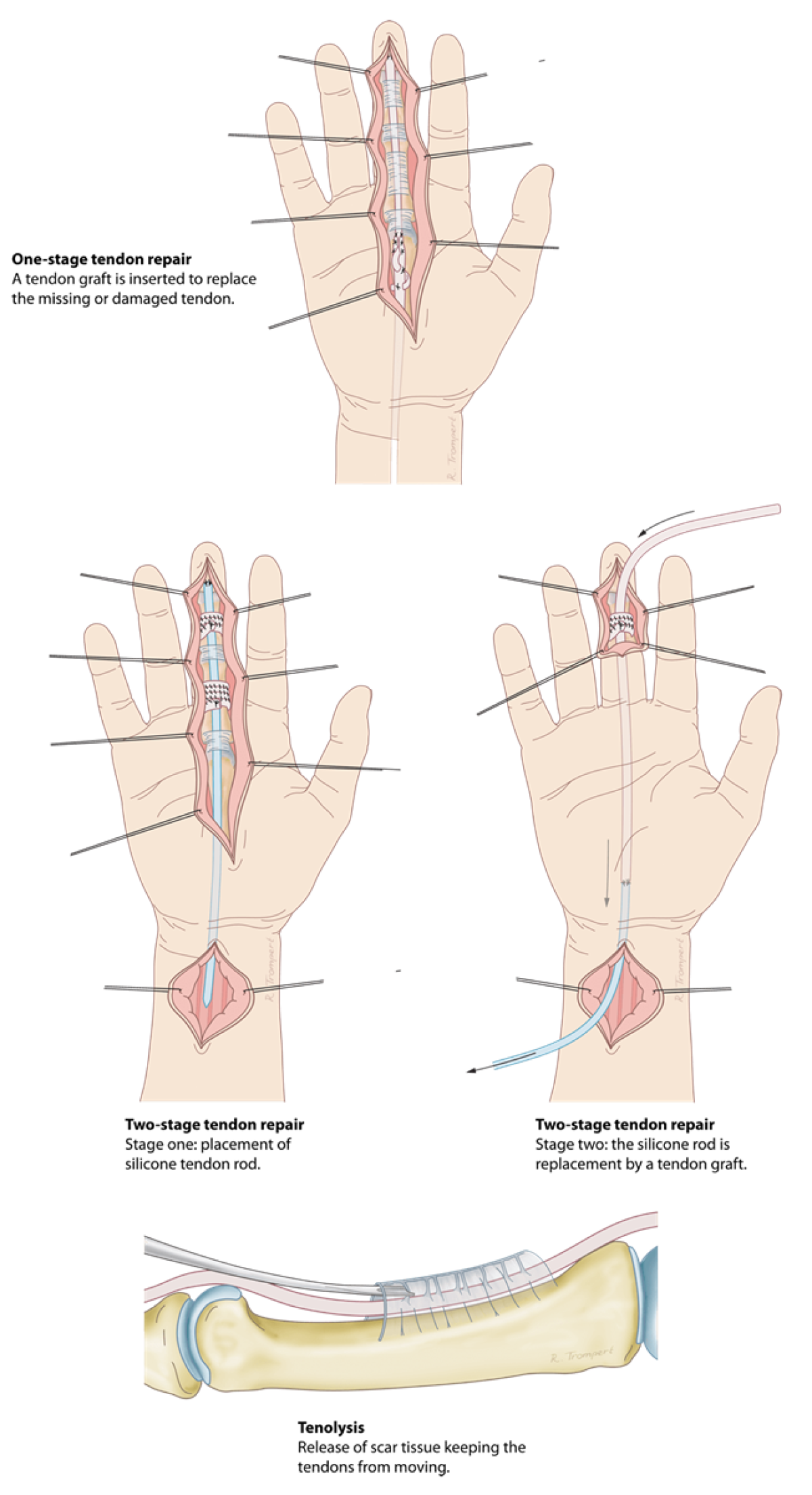Tendon reconstruction surgery
Ideally, injury of the tendons that bend the fingers (flexor tendons) is repaired by re-attaching the cut ends with strong sutures, followed by early active motion hand therapy.
Not all cases allow for direct repair of flexor tendon injury. This can be due to delay in diagnosis or treatment or other factors such as associated injury to skin cover or bone. In these cases, a one- or two-stage tendon reconstruction is required.
Also, after any tendon surgery, range of motion can be reduced due to scar tissue keeping the tendons from gliding. If maxial hand therapy efforts did not yield any further improvement in motion, a release of the tendon from scar tissue (tenolysis) may be the best option.

Tendon reconstruction
In a one-stage flexor tendon reconstruction, a spare tendon from the forearm, lower leg or foot can be used as a graft to reconstruct the injured tendon by bridging the defect.
In a two-stage flexor tendon reconstruction, a temporary silicone tendon implant is placed during the first operation. Around the implant a new gliding plane will form for the new flexor tendon. During the second operation, typically 3 months later, a tendon graft using a spare tendon from the forearm, lower leg or foot will replace the silicone tendon.
Hand therapy can prevent scar tissue to form around the tendons, keeping them from gliding. If that is the case, the tendons can be released surgically (tenolysis).
Before, in between and after the operations, ongoing hand therapy is essential to obtain or maintain a good result.
Dr. Paul van Minnen wrote the chapter on Flexor Tendon Reconstruction in the 5 volume book of Disorders of The Hand published by Springer in 2015. He can provide you with information on the latest and preferred techniques on flexor tendon reconstruction.
